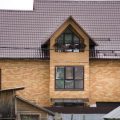Understanding Damp in UK Homes
Damp is a common issue faced by many homeowners and renters across the UK, largely due to our unique climate characterised by frequent rainfall, high humidity, and cool temperatures. Understanding what causes damp and recognising the different types can help you take proactive steps to protect your home and health.
Common Types of Damp in British Properties
| Type of Damp | Description | Typical Locations |
|---|---|---|
| Rising Damp | Moisture rising up from the ground through walls by capillary action | Ground floor walls, basements |
| Penetrating Damp | Water seeping through external walls due to defects or poor maintenance | Exterior walls, ceilings, around windows and doors |
| Condensation | Moisture in the air condenses on cold surfaces indoors | Kitchens, bathrooms, bedrooms, behind furniture |
Typical Causes of Damp in UK Homes
- Poor ventilation leading to condensation build-up
- Leaky roofs or guttering allowing rainwater ingress
- Defective pointing or brickwork permitting water penetration
- Lack of damp-proof courses or failed waterproof membranes in older properties
Why the UK Climate Makes Homes Susceptible
The UKs persistent wet weather, mild winters, and short summers create ideal conditions for damp problems. Many British homes are built with solid brick or stone walls that may lack modern waterproofing features, making them more vulnerable to moisture intrusion. Understanding these factors is essential for effective damp prevention and management.
2. Spotting the Warning Signs
Identifying damp early can save you a lot of hassle and expense down the line. In UK homes, damp problems tend to reveal themselves through both visual and olfactory cues. Here’s how you can stay one step ahead:
Visual Indicators
Damp makes its presence known in several ways around your home. Keep an eye out for these tell-tale signs:
| Warning Sign | Description |
|---|---|
| Tide Marks | Brownish stains or lines on walls, typically up to a metre high, showing where moisture has risen. |
| Peeling Wallpaper or Paint | Look for areas where wallpaper is bubbling or paint is flaking off, especially near skirting boards and windowsills. |
| Mould Growth | Black, green, or white patches on walls, ceilings, or around window frames indicate prolonged dampness. |
| Salt Deposits | A white, powdery residue left behind as water evaporates from masonry surfaces. |
Olfactory (Smell) Indicators
Damp isn’t just about what you see—often, it’s what you smell that gives it away first. A persistent musty odour, especially in corners, behind furniture, or in cupboards, suggests excess moisture lurking within your property.
Where to Check
- Behind large furniture placed against external walls
- Inside built-in wardrobes and airing cupboards
- Around window frames and sills
- In basements and cellars, if your home has them
Top Tip for UK Homes
If you notice condensation on windows most mornings or struggle with drying clothes indoors during winter, these are extra clues that your home may be at risk of developing damp issues. Early recognition means you can address the problem before it becomes a much bigger job—and expense!

3. DIY Inspection Tips
When it comes to tackling damp issues in UK homes, a thorough inspection can save you time and money. Here’s how you can carry out a cost-effective check using items you likely already have at home. Regular DIY inspections will help spot early warning signs before they become bigger, pricier problems.
What to Look For Indoors
- Musty Smells: Trust your nose—damp often gives off a distinct, musty odour, especially in closed-off rooms or cupboards.
- Water Stains & Discolouration: Check walls, ceilings, and around windows for yellowish stains or peeling wallpaper/paint.
- Mould Growth: Small black or green patches are tell-tale signs, often found in bathrooms, kitchens, or behind furniture.
- Damp Patches: Feel for cold or clammy spots on walls with your hand, particularly at skirting level.
Simple Tools You Can Use
| Tool | How to Use | Where to Check |
|---|---|---|
| Torch (flashlight) | Shine into corners, under sinks, and behind furniture to spot hidden mould or stains. | Kitchens, bathrooms, lofts, cellars |
| Tape Measure/Ruler | Measure cracks in plaster or gaps around windows; widening gaps may indicate moisture issues. | Around window frames and doorways |
| Kettle/Mirror | Boil water or breathe on a mirror near windows—watch for excessive condensation which signals poor ventilation. | Kitchens and bathrooms |
| Screwdriver | Press gently into timber frames; soft wood may mean rot from excess moisture. | Window sills and skirting boards |
What to Look For Outdoors
- Blocked Gutters & Downpipes: Overflowing water can seep into walls. Inspect after heavy rain for leaks or blockages.
- Moss & Algae Growth: Excessive growth on external walls is a sign of persistent dampness.
- Deteriorating Pointing & Render: Crumbling mortar lets moisture penetrate brickwork—look closely at older homes.
- Poor Drainage: Check if puddles form around the house after rain; this could signal drainage issues needing attention.
A Quick-Check Summary Table for DIY Damp Inspection
| Location | Main Signs to Check |
|---|---|
| Lounge/Bedrooms | Patches behind sofas, peeling paint, musty smells |
| Kitchens/Bathrooms | Mould near sinks/showers, condensation on windows/mirrors |
| Exterior Walls | Moss growth, cracks in brickwork/render, blocked gutters |
By following these easy steps and using everyday household tools, you can catch potential damp problems early and avoid costly repairs. Remember: a small effort now means bigger savings down the line!
4. Common Causes and How to Address Them
Condensation
Condensation is by far the most common cause of damp in UK homes, especially during colder months. It typically forms when moist air comes into contact with cold surfaces, such as windows or external walls, leading to water droplets and sometimes black mould growth.
DIY-Friendly Fixes for Condensation
- Improve Ventilation: Open windows regularly, especially after showering or cooking. Installing trickle vents on windows is a simple upgrade.
- Use Extractor Fans: Make sure kitchen and bathroom extractor fans are working efficiently and used consistently.
- Dry Clothes Outdoors: Avoid drying clothes indoors whenever possible. If you must, use a dehumidifier nearby.
- Insulate Cold Surfaces: Add insulation to external walls or use thermal wallpaper in problem areas for a budget solution.
Rising Damp
Rising damp occurs when moisture from the ground moves up through walls via capillary action. This is less common but can be more serious, often identified by tide marks on walls and crumbling plaster near skirting boards.
Tackling Rising Damp
| Solution | DIY-Friendly? | Description |
|---|---|---|
| Check Drainage & Ground Levels | Yes | Ensure soil or paving outside sits below the damp proof course (DPC) and slopes away from the house. |
| Damp Proof Paints & Sealers | Yes (temporary) | Damp proofing paints can offer short-term relief but won’t address underlying issues. |
| Install/Reinstate DPC | No | This usually requires professional intervention, such as chemical injection or physical membrane installation. |
Penetrating Damp
Penetrating damp happens when water enters through defects in walls, roofs, or around windows and doors—often seen after heavy rain or in older properties with solid brickwork.
How to Fix Penetrating Damp
- Inspect & Repair Brickwork: Repoint missing mortar and replace damaged bricks where necessary (DIY if you’re confident).
- Seal External Walls: Apply breathable waterproof coatings designed for UK weather; this can be a good DIY project if you have safe access.
- Check Roofs & Gutters: Clear gutters regularly and replace cracked tiles—simple maintenance that prevents bigger issues.
- Repair Window Frames: Fill gaps around window frames with exterior-grade sealant to stop leaks.
A Quick Comparison of Damp Types and Fixes
| Damp Type | Main Cause | Main DIY Solution |
|---|---|---|
| Condensation | Poor ventilation/moisture build-up indoors | Improve airflow; use extractor fans; insulate cold spots |
| Rising Damp | No/failed damp proof course; high ground level outside wall | Lower ground levels; apply temporary damp-proof paint; call professionals for DPC work |
| Penetrating Damp | Defective masonry, roofing, or seals letting in rainwater | Masonry repairs; reseal windows; maintain gutters and roofs |
Tackling damp at home is often about routine checks and small fixes before problems escalate. Most condensation issues are entirely DIY-friendly with some affordable upgrades, while rising and penetrating damp may require professional input if basic steps don’t resolve the problem. Acting early not only saves money but also protects your home’s structure—and your health—from further damage.
5. Preventative Measures on a Budget
Keeping damp at bay doesn’t have to cost a fortune. Here are some affordable and practical steps every UK homeowner or tenant can take to minimise future damp issues, making use of everyday routines and clever budgeting.
Ventilation: Simple & Effective
Proper ventilation is essential for reducing moisture build-up. Open windows regularly, especially after cooking or showering. If privacy or security is an issue, use trickle vents commonly found in modern uPVC windows or keep internal doors open when possible. Consider using budget-friendly extractor fans in kitchens and bathrooms—many models are easy to install as a DIY project.
Quick Ventilation Tips
| Action | Estimated Cost |
|---|---|
| Open windows daily (10-15 minutes) | Free |
| Install/clean trickle vents | £0-15 each |
| DIY extractor fan installation | £20-50 |
Regular Maintenance on a Shoestring
Staying ahead of damp is often about little jobs done regularly. Check gutters and downpipes for blockages every few months—overflowing gutters are a common cause of penetrating damp in the UK’s rainy climate. Use an old coat hanger or a cheap gutter cleaning tool if you’re comfortable with heights. Seal gaps around windows and doors using affordable sealant from any local DIY shop, stopping draughts and moisture ingress before they start.
Maintenance Checklist
| Task | Frequency |
|---|---|
| Clean gutters/downpipes | Twice yearly |
| Check for cracked render/mortar | Annually |
| Seal window/door frames | As needed |
Sensible Heating Habits
Damp thrives in cold, poorly-heated homes. Using your heating wisely can help prevent condensation without breaking the bank. Set your thermostat to maintain a steady temperature (ideally between 18°C and 21°C) rather than turning it on full blast only when it feels cold. Make use of thermostatic radiator valves to heat only the rooms you’re using, and avoid blocking radiators with furniture or laundry.
Budget-Friendly Heating Advice
- Draught-proof doors and letterboxes with inexpensive strips available from hardware shops.
- If drying clothes indoors, do so in a well-ventilated room with a window slightly ajar.
- Avoid portable gas heaters, as they release water vapour into the air.
- If eligible, check for government grants or schemes for insulation upgrades—these can save money long term.
By adopting these low-cost measures, you’ll not only protect your home from future damp but also save on energy bills—a win-win for every UK household looking after both their property and their wallet!
6. When to Call in the Professionals
While many damp problems can be tackled with a bit of DIY know-how and elbow grease, there are times when it’s best to bring in the experts. Knowing when to call for professional help is crucial, especially if you want to avoid bigger repair bills down the line or run afoul of British housing regulations. Here’s how to recognise when it’s time to pick up the phone, what legal requirements might apply, and tips on finding reputable local specialists without overspending.
Spotting Serious Damp Issues
Not all damp is created equal. Here are signs that your problem may be too serious for a DIY fix:
| Issue | DIY or Professional? |
|---|---|
| Persistent black mould despite cleaning | Professional |
| Damp patches spreading across multiple rooms | Professional |
| Bubbling plaster and crumbling brickwork | Professional |
| Mystery leaks with no obvious source | Professional |
| Minor condensation on windows | DIY |
Understanding UK Regulations and Responsibilities
If you own your home, you’re responsible for repairs, but if you rent, landlords must keep properties free from serious damp under the Housing Health and Safety Rating System (HHSRS). In listed buildings or flats, extra regulations may apply, so always check before starting work. For significant structural damp or issues linked to plumbing or roofing, building regs may require certified tradespeople.
Quick Reference: Who’s Responsible?
| Type of Property | Main Responsibility |
|---|---|
| Owner-occupied house | Homeowner |
| Privately rented flat/house | Landlord (for structural damp) |
| Council/social housing | Council/housing association |
Finding Reputable Local Experts Without Breaking the Bank
- Get at least three quotes from local, TrustMark-registered or Which? Trusted Traders.
- Avoid contractors who pressure you into quick decisions or offer cash-only deals.
- If on a tight budget, look for local authority schemes or grants that assist with damp-proofing costs.
Money-Saving Tip:
If you’re eligible for certain benefits, you may qualify for financial help with home repairs through local councils or charities such as Turn2us.


